Deneb is the brightest star in the constellation of Cygnus – the Swan. It is a first magnitude star and it is one of the vertices of the asterism known as the Summer Triangle and the “Head” of the Northern Cross.
Key Facts & Summary
- Deneb is the 19th brightest star in the night sky, situated at around 2.615 light-years / 802 parsecs away from the Sun.
- It has an apparent magnitude of +1.25. Being an Alpha Cygni variable star, its brightness varies between magnitudes 1.21 and – 1.29.
- Deneb is a blue-white supergiant star of spectral type A2 la.
- Since Deneb is very far away, its exact luminosity is hard to calculate but estimates suggest that it is between 55.000 to 196.000 times brighter than our sun.
- Deneb is so bright, that it actually rivals Rigel as the most luminous first magnitude star. Many estimates actually point out that Deneb has already taken the spot as the brightest first magnitude star.
- Deneb is almost twice as hot as our sun, with average temperatures estimated at around 8.525 K.
- Deneb is around 19 times more massive than our sun, and it has an incredible radius of 203 solar radii, and as such, a diameter of more than 200 times that of the sun.
- Its absolute magnitude has been speculated to be around -8.38.
- Due to Earth’s axial precession, Deneb will become our northern star around the year 9.800 A.D.
- Deneb’s spectrum has been used as one of the stable references by which other stars are classified since 1943.
- Though the star is massive, Deneb also looses much of its mass at around 100.000 times the Sun’s rate of mass loss or equivalent to almost one Earth mass per 500 years.
- Deneb is the most distant star out of the first 30 brightest stars in the night sky.
- Deneb marks the tip of the Northern Cross, being the brightest star in this asterism which is made up of the brightest stars of the Cygnus constellation.
- The star culminates each year on October 23 at 6 PM and on the 7th of September at 9 PM – thus it corresponds to the summer evenings in the northern hemispheres.
Since ancient times the constellations that represented animals, and had a bright star that marked their tail, were named Deneb or had Deneb in their names such as Deneb Algiedi or Deneb Kaitos. The word Deneb is derived from the Arabic “dhaneb” which translates to “the tail.”

When it comes to the constellation of Cygnus – which represents a swan – Deneb marks its tail and as such the reason for its naming. The constellation of the swan represented Zeus in Greek mythology. As the story goes, Zeus transformed himself into a swan to seduce the Queen of Sparta named Leda.
He succeeded and she gave birth to two sets of twins: Helen and Clytemnestra, and Castor and Polydeuces (the star Pollux – in Latin). The twins Castor and Polydeuces are represented by the Gemini constellation, where the brightest stars are named after them.
Formation
Since Deneb is so far away from Earth, its exact age is difficult to determine. Nevertheless, Deneb spent much of its early life as an O-type main-sequence star of 23 solar masses, and it has now exhausted the hydrogen at its core. The star has begun to cool and expand.
Distance, Size, and Mass
Deneb is the farthest and brightest star of the first 30 brightest stars in the night sky, at a distance of approximately 2.615 light-years / 802 parsecs away from the Sun.
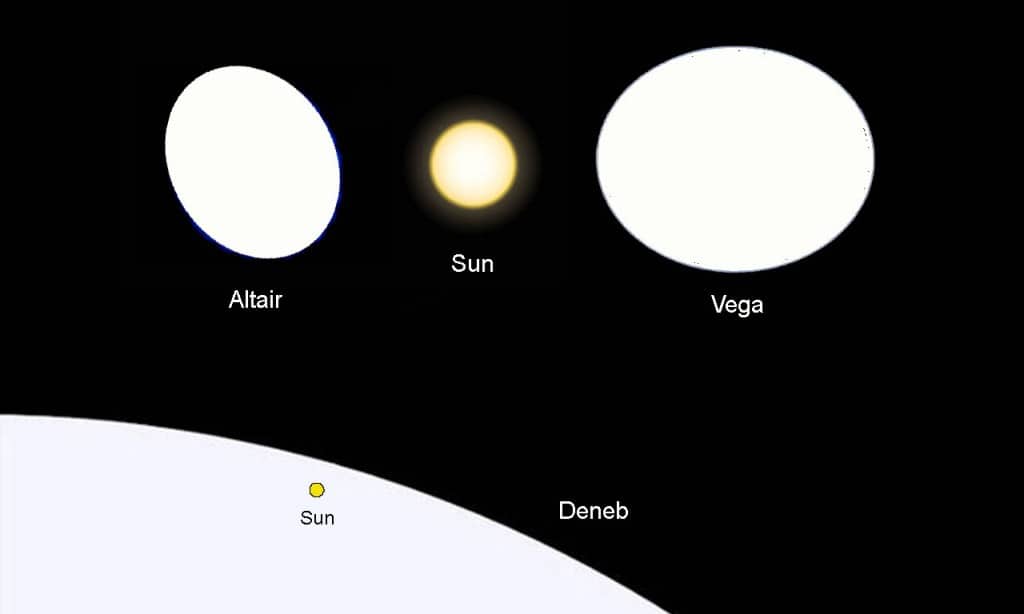
Its diameter is more than 200 times that of the sun’s while its radius is at around 203 solar radii. Deneb is also at least 19 times more massive than our sun, even though it loses its mass very rapidly. Deneb is actually so big that if it were placed in the center of the solar system, it would extend up to Earth’s orbit.
Other Characteristics
Deneb loses much of its mass due to strong stellar winds. It loses mass at around 100.000 times the Sun’s rate of mass loss or equivalent to almost one Earth mass per 500 years. This giant is almost twice as hot as our sun, with surface average temperatures estimated at around 8.525 K.
Being an Alpha Cygni variable star, Deneb’s brightness varies between magnitudes 1.21 and – 1.29. Its average apparent magnitude is at around +1.25 while its absolute magnitude has been speculated to be around -8.38. Alpha Cygni variable stars usually exhibit non-radial fluctuations of the surface and as a result, there is little change in their spectral type and luminosity.
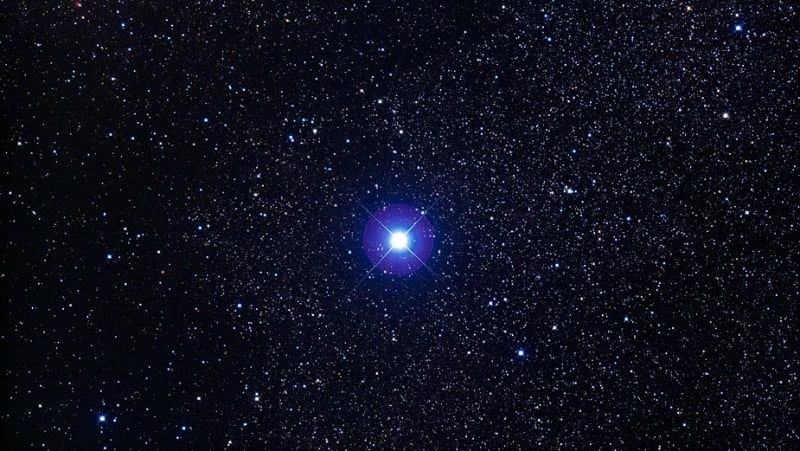
Estimates regarding Deneb’s luminosity suggest that it is between 55.000 to 196.000 times brighter than our sun. Thus it is the brightest first magnitude star.
Location
Deneb is located in the constellation of Cygnus, it is the brightest star in the constellation and it is also part of a famous asterism, namely the Northern Cross and it is also of the vertices of the Summer Triangle.
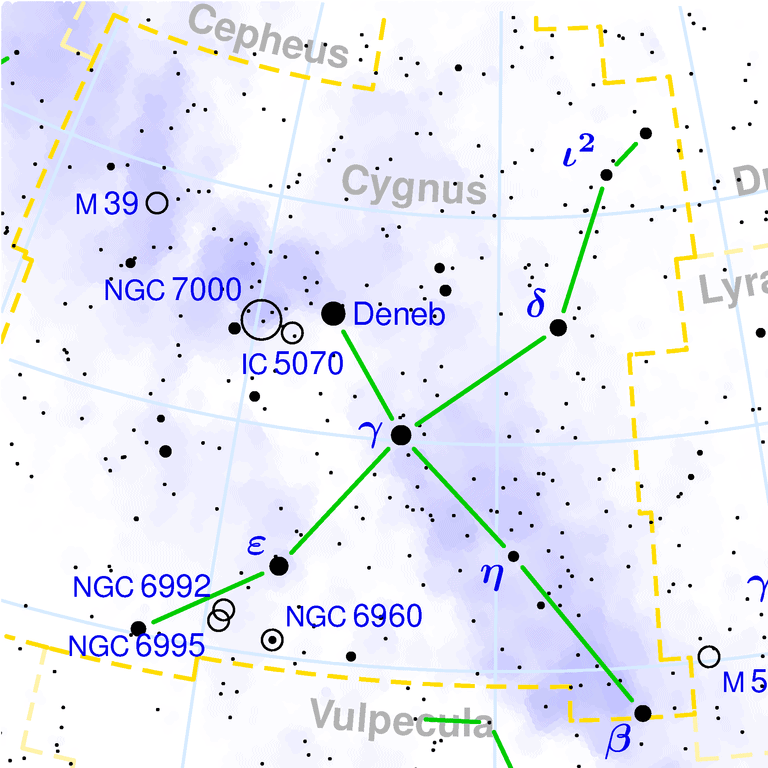
Deneb marks the tail of Cygnus – the celestial swan while the double star Albireo marks the swan’s beak. Deneb is also the brightest star in the Northern Cross asterism, marking the tip or “Head” of the asterism.
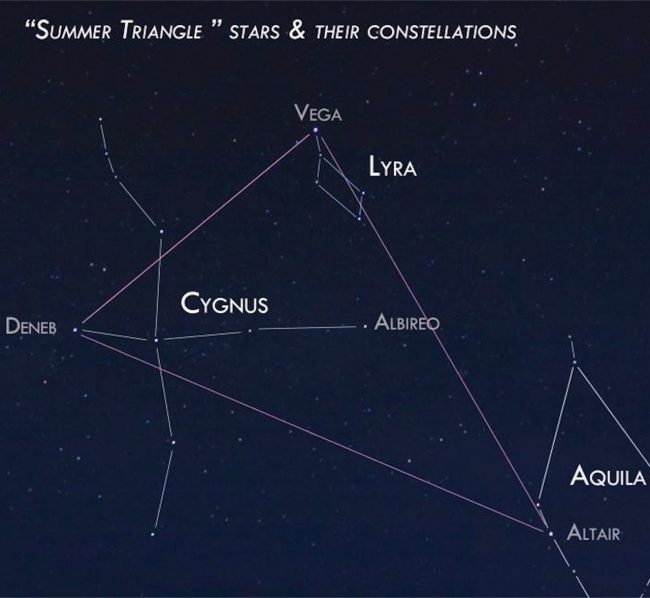
When it comes to the Summer Triangle, Deneb is the farthest star of the asterism, but second in brightness after Vega. The Summer Asterism is made up of Deneb, Vega, and Altair, all of whom are first magnitude stars.
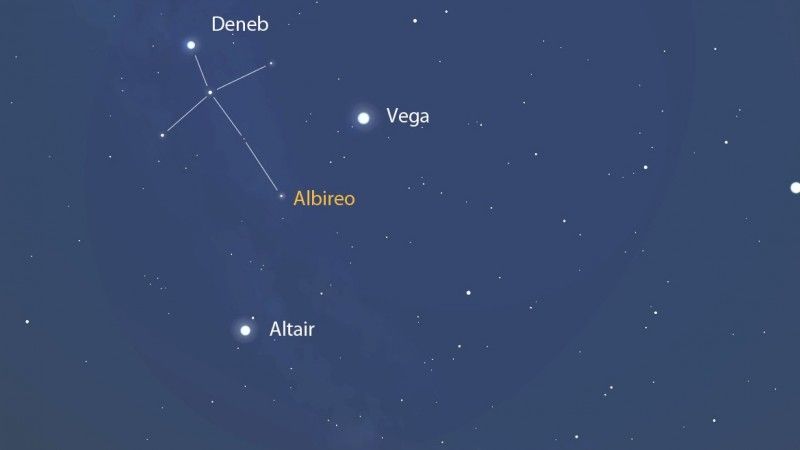
The Future
Due to Earth’s axial precession, Deneb will become our northern star around the year 9.800 A.D. In the far future, Deneb will explode as a supernova in a couple of million years. It is currently known that the star has stopped fusing hydrogen at its core, but what will happen next is difficult to predict. It is believed that the star is cooling and expanding. It may become either an extremely luminous red giant or it will become a luminous blue variable, or maybe even a Wolf-Rayet star.
Did you know?
- If Deneb would replace the star Vega in the night sky, it would be bright enough to cast shadows on Earth.
- Out of the 58 stars selected for navigation, Deneb is the only one selected from the Cygnus constellation but it has some colleagues in this group from its Summer Triangle association, namely Vega and Altair.
- One of the older names of Deneb is “Arided”. It is a word derived from Arabic and it translates to “the follower.”
- For the Chinese, Deneb was the Fourth Star of the Celestial Ford – an asterism which was considered to be a bridge across the Milky Way.
- In the Chinese folklore, Deneb was associated with the myth of the weaver girl and the cowherd – represented by Vega and Altair – they were two separate lovers who could only reunite once a year. Deneb represented yet again a bridge that allows the lovers to meet.
- Both the Northern Cross and Summer Triangle asterisms are prominent and high in the evening sky throughout the summer months in the northern hemispheres.
- Deneb appeared in many science fiction shows such as the popular Star Trek series or Babylon 5. Many times the name is associated with planets.
Sources:
Image source:
- https://steemitimages.com/DQmQv58ayNVS1kxfYNAnPXFSJHoctfU5wyM6XZxQm3BLdmD/5317519_orig.jpg
- http://astronoteen.org/wp-content/uploads/2016/08/Vega-Altair-Deneb-sun-comparison-1024×614.jpg
- https://en.es-static.us/upl/2015/08/Deneb-cropped.jpg
- https://upload.wikimedia.org/wikipedia/commons/thumb/c/cc/Cygnus_constellation_map.png/768px-Cygnus_constellation_map.png
- https://en.es-static.us/upl/2014/06/summer-triangle-sq-e1464993522685.jpg
- https://i.pinimg.com/originals/8f/3f/88/8f3f8811aaca9cf40694a0122b49ae00.jpg
